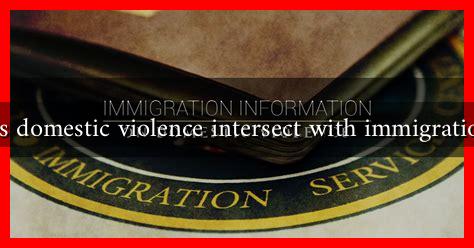-
Table of Contents
How Does Domestic Violence Intersect with Immigration Issues?
Domestic violence is a pervasive issue that affects individuals across all demographics, but for immigrants, the challenges are often compounded by their immigration status. The intersection of domestic violence and immigration issues creates a complex landscape that can leave victims feeling trapped and powerless. This article explores how these two critical issues intersect, the barriers faced by immigrant victims, and potential solutions to support them.
The Unique Challenges Faced by Immigrant Victims of Domestic Violence
Immigrant victims of domestic violence often face unique challenges that can hinder their ability to seek help. These challenges include:
- Fear of Deportation: Many undocumented immigrants fear that reporting domestic violence will lead to their arrest and deportation, which can prevent them from seeking help.
- Lack of Knowledge about Rights: Immigrants may not be aware of their legal rights or the resources available to them, making it difficult to escape abusive situations.
- Language Barriers: Limited English proficiency can hinder communication with law enforcement, healthcare providers, and legal advocates.
- Cultural Stigma: Cultural norms may discourage victims from speaking out about abuse, leading to isolation and silence.
Legal Protections for Immigrant Victims
Despite the challenges, there are legal protections in place for immigrant victims of domestic violence in the United States. Some of these include:
- U Visas: The U visa is designed for victims of certain crimes, including domestic violence, who assist law enforcement in the investigation or prosecution of the crime. This visa provides temporary legal status and work authorization.
- VAWA Self-Petitions: The Violence Against Women Act (VAWA) allows certain immigrant victims of domestic violence to self-petition for legal status without the abuser’s knowledge, providing a pathway to safety.
- State and Local Protections: Many states have laws that provide additional protections for victims of domestic violence, regardless of immigration status.
Case Studies: Real-Life Impacts
To illustrate the intersection of domestic violence and immigration issues, consider the following case studies:
- Maria’s Story: Maria, a Mexican immigrant, faced years of abuse from her partner. Fearful of deportation, she remained silent until she learned about the U visa. With the help of a local advocacy group, she reported the abuse and applied for the visa, ultimately gaining legal status and the ability to rebuild her life.
- Ravi’s Experience: Ravi, an Indian immigrant, was threatened by his partner that if he reported the abuse, he would be reported to immigration authorities. After attending a community workshop on immigrant rights, he discovered VAWA protections and was able to seek help without fear of deportation.
Statistics Highlighting the Issue
Understanding the scope of domestic violence among immigrant populations is crucial. Here are some relevant statistics:
- According to the National Domestic Violence Hotline, 1 in 4 women and 1 in 9 men experience severe intimate partner physical violence.
- A study by the Asian Pacific Institute on Gender-Based Violence found that immigrant women are more likely to experience domestic violence than their U.S.-born counterparts.
- Research indicates that 55% of immigrant women who experience domestic violence do not report it to authorities due to fear of deportation.
Conclusion: Bridging the Gap
The intersection of domestic violence and immigration issues presents significant barriers for victims seeking help. However, by raising awareness of available legal protections and resources, communities can better support immigrant victims. It is essential for advocates, law enforcement, and service providers to understand these unique challenges and work collaboratively to create safe environments for all individuals, regardless of their immigration status.
In summary, addressing domestic violence within immigrant communities requires a multifaceted approach that includes legal advocacy, community education, and culturally sensitive support services. By empowering victims and providing them with the necessary resources, we can help break the cycle of abuse and promote healing and recovery.
For more information on resources available to immigrant victims of domestic violence, visit the National Domestic Violence Hotline.

